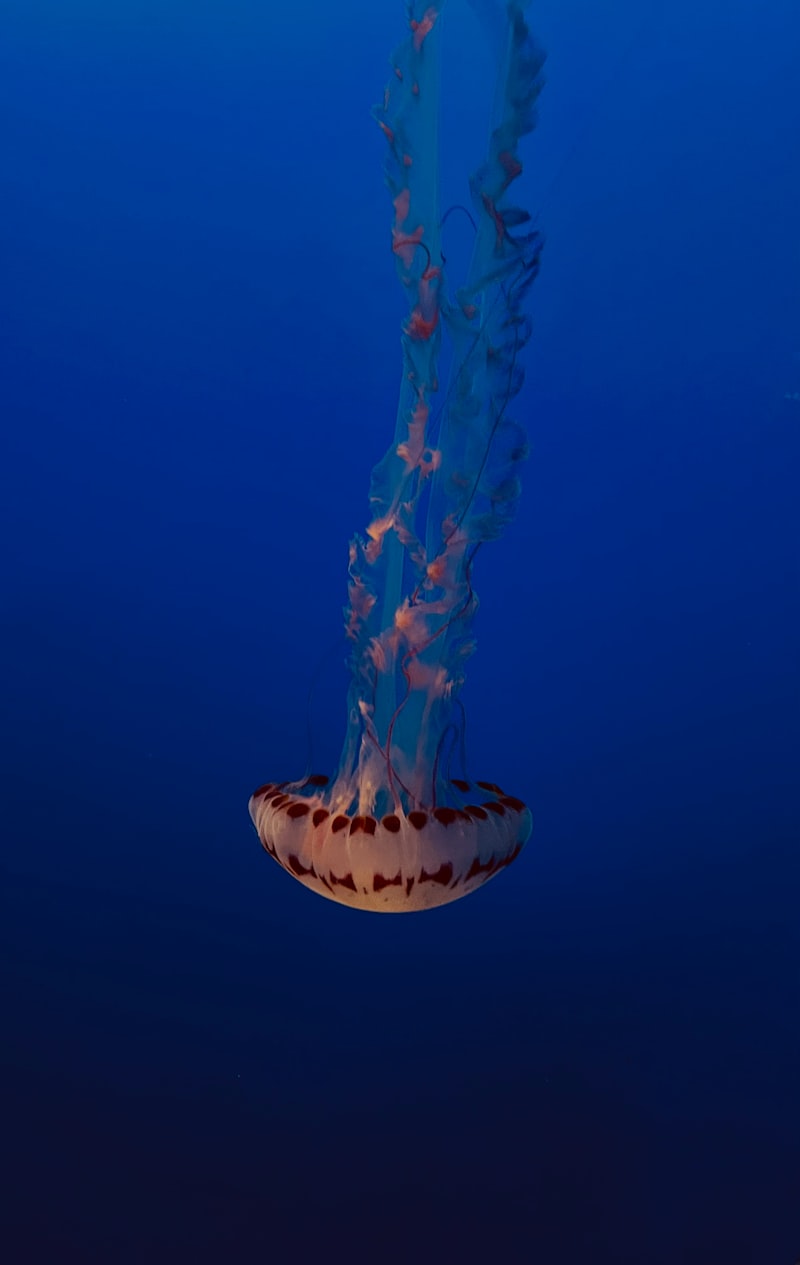Ever wondered about animals that seem to break all the rules of evolution? From creatures with extraordinary adaptations to those defying expectations, the natural world is full of surprises. Let’s dive into some fascinating examples.
One standout is the axolotl, a unique amphibian native to Mexico. Unlike its amphibian relatives, the axolotl retains its larval features throughout its life, including its external gills. This ability to remain in a juvenile state is called neoteny, and it allows the axolotl to regenerate limbs and even parts of its brain—a feat unheard of in most other vertebrates.
Moving on to the platypus, this quirky Australian mammal continues to baffle scientists. It lays eggs like a reptile, yet it nurses its young with milk. It possesses a duck-like bill equipped with electroreceptors, allowing it to detect prey underwater—an adaptation more akin to fish. The platypus is a true testament to the diversity of evolutionary paths animals can take.

Then there’s the mimic octopus, a master of deception found in the waters of Southeast Asia. This cephalopod not only changes colors like other octopuses but also mimics the shapes and movements of other sea creatures, such as lionfish and flatfish. This extraordinary ability helps it evade predators and sneak up on unsuspecting prey—a remarkable example of adaptation through mimicry.
Nature constantly challenges our understanding of evolution with these extraordinary creatures. They remind us that the story of life on Earth is far from straightforward. Each species, like the axolotl, platypus, and mimic octopus, offers a glimpse into the endless possibilities of adaptation and survival in the animal kingdom.
Nature’s Rebels: 10 Animals That Challenge Evolutionary Theories
Ever wondered about nature’s rebels? Those creatures that defy the norms and challenge what we think we know about evolution? Let’s dive into the fascinating world of 10 animals that defy conventional wisdom and make scientists rethink their theories.
Meet the axolotl, the salamander that refuses to grow up. Unlike its relatives who undergo metamorphosis, this little guy retains its juvenile features throughout its life. It’s like the Peter Pan of the amphibian world, staying forever young in its larval form.
Imagine discovering a living fossil! The coelacanth did just that when it emerged from the depths of the ocean, resembling its ancient ancestors from millions of years ago. Its existence challenges the idea that certain species must evolve or perish.
The platypus is an evolutionary oddball with its duck-like bill, beaver-like tail, and ability to lay eggs. It’s like nature took bits and pieces from different species and made a mash-up that somehow works perfectly in its Australian habitat.
Don’t be fooled by its small size; the mantis shrimp is a powerhouse of evolutionary quirks. It has the most complex eyesight in the animal kingdom, capable of seeing colors and polarized light beyond human comprehension. Its punch is also one of the fastest movements in nature, challenging what we know about speed and power.
Who needs beauty sleep when you’re a naked mole rat? These wrinkly rodents defy aging and cancer in ways that leave scientists scratching their heads. Living in underground colonies, they’ve evolved to withstand low oxygen levels and thrive in harsh conditions.
Tardigrades, or water bears, are the ultimate survivors. They can endure extreme temperatures, radiation, and even the vacuum of space! Their resilience challenges our understanding of life’s limits and what it takes to survive in the harshest environments.
The Komodo dragon is a real-life dragon with a deadly bite that can take down prey much larger than itself. It challenges evolutionary theories with its size, hunting prowess, and unique ability to reproduce through parthenogenesis when males are scarce.
It’s not just a seaweed—meet the leafy sea dragon, a master of disguise in the underwater world. With its leaf-like appendages, it blends seamlessly into its surroundings, challenging predators and photographers alike to spot the real deal.
Who needs wings when you’ve got fins? Flying fish challenge gravity by gliding above the ocean’s surface, evading predators and traveling incredible distances. They showcase nature’s ability to innovate and adapt to new challenges.
Shocking, isn’t it? The electric eel generates electricity to stun prey and deter predators—a feat that challenges our understanding of how animals use energy. Its electric organs are a marvel of biological engineering, paving the way for new technologies in medicine and beyond.
Nature’s rebels remind us that evolution is full of surprises. From ancient relics to modern marvels, these animals challenge our understanding of what it means to survive and thrive in a world constantly changing.
Beyond Adaptation: Creatures That Rewrite Evolution’s Rules

Nature’s evolutionary tapestry is woven with threads of adaptation, but amidst its intricate patterns lie creatures that defy conventional norms, rewriting the very rules of evolution. These remarkable beings challenge our understanding of how life adapts and thrives in diverse environments.
Imagine a salamander that can regrow entire limbs, not just once but repeatedly throughout its life. This ability, known as regeneration, goes beyond mere survival—it’s a testament to the astonishing potential within biological systems to heal and renew. Such creatures inspire awe and curiosity, prompting us to delve deeper into the mechanisms that govern their extraordinary abilities.
In the depths of the ocean, where sunlight struggles to penetrate, exists a realm illuminated by bioluminescent creatures. These organisms produce light through chemical reactions, transforming darkness into a mesmerizing display of nature’s ingenuity. Their ability to emit light serves various purposes, from attracting mates to warding off predators, showcasing evolution’s creative solutions to life’s challenges.
Consider the humble tardigrade, often hailed as one of the toughest creatures on Earth. Resilient to extreme temperatures, radiation, and even the vacuum of space, tardigrades exemplify adaptability at its peak. They can enter a state of suspended animation, known as cryptobiosis, surviving conditions that would spell doom for most other life forms. This ability to endure harsh environments sparks wonder about the limits of biological resilience.
In the realm of social insects, the behavior of ant colonies stands out as a model of collective intelligence. Ants operate as a superorganism, coordinating their actions with precision to achieve remarkable feats such as building intricate nests and waging wars. Their complex societies challenge our understanding of evolution’s role in shaping not just individuals, but entire interconnected communities.
Evolutionary Mavericks: Animals That Defy Natural Selection
In the vast tapestry of nature, some creatures stand out as true anomalies, challenging the very principles of natural selection that govern adaptation and survival. These evolutionary mavericks exhibit traits that defy conventional wisdom, often leaving scientists in awe and prompting questions about the boundaries of evolutionary theory.
Take the axolotl, for instance—a salamander renowned for its remarkable ability to regenerate lost limbs, organs, and even parts of its brain. While most animals lose this ability early in development, the axolotl retains it throughout its life, making it a subject of intense study for researchers seeking to unlock the secrets of regeneration.
Then there’s the tardigrade, often dubbed as the “water bear,” known for its extreme resilience to harsh conditions. These microscopic creatures can withstand radiation, boiling temperatures, freezing cold, and even the vacuum of space. Their ability to enter a state of cryptobiosis, essentially shutting down their metabolism to survive extreme environments, challenges the limits of biological endurance.
Moving to the ocean depths, the immortal jellyfish (Turritopsis dohrnii) presents another marvel of evolution. This jellyfish has the unique ability to revert its cells back to their earliest form (essentially reversing aging) under certain conditions. This process allows it to potentially evade death and live indefinitely, a capability that has captivated scientists and inspired speculation about the nature of immortality.
In the avian world, the kakapo—a flightless parrot native to New Zealand—exhibits a rather unconventional approach to survival. Despite its inability to fly and its large, heavy body, the kakapo has adapted to its environment by becoming nocturnal and developing a strong sense of smell. These adaptations have allowed it to thrive in its specific ecological niche, showcasing nature’s ability to find unique solutions to survival challenges.
Unconventional Evolution: 10 Species That Break the Mold
Ever wondered how some species defy the norms of evolution and carve their own path in the natural world? From creatures that live in extreme environments to those with bizarre adaptations, nature never ceases to surprise. Let’s delve into the fascinating realm of unconventional evolution with 10 species that break the mold.
-
Axolotl (Ambystoma mexicanum): Known as the Mexican walking fish, the axolotl remains in its larval form throughout its life, exhibiting neoteny—a rare phenomenon where adults retain juvenile characteristics.
-
Mantis Shrimp (Stomatopoda): Armed with powerful appendages that can strike with the speed of a bullet, the mantis shrimp boasts one of the most complex visual systems in the animal kingdom, perceiving colors beyond human comprehension.
-
Naked Mole Rat (Heterocephalus glaber): Thriving in underground colonies, naked mole rats defy aging conventions with their resistance to cancer and remarkable longevity, challenging the biological norms of mammalian aging.
-
Anglerfish (Order Lophiiformes): Inhabiting the deep sea, female anglerfish sport a bioluminescent lure on their heads to attract prey in the darkness—a unique adaptation that exemplifies extreme sexual dimorphism.
-
Aye-aye (Daubentonia madagascariensis): Found in Madagascar, the aye-aye’s elongated middle finger is specialized for extracting grubs from tree bark—a bizarre adaptation that sets it apart from other primates.
-
Sloth (Order Pilosa): Evolving to conserve energy in the nutrient-scarce canopy of South American rainforests, sloths move slowly and grow algae on their fur, creating a unique ecosystem on their bodies.
-
Leaf-tailed Gecko (Uroplatus): Masters of camouflage, leaf-tailed geckos resemble dead leaves with their flattened bodies and intricate patterns, blending seamlessly into their forest habitats.
-
Blobfish (Psychrolutes marcidus): Inhabiting the deep ocean where pressures are extreme, the blobfish lacks a swim bladder, allowing its gelatinous body to maintain buoyancy—showcasing an adaptation to its harsh environment.
-
Star-nosed Mole (Condylura cristata): Sporting a bizarre star-shaped appendage on its snout with over 22 sensitive tentacles, the star-nosed mole navigates its underground world with remarkable speed and precision.
-
Sunda Flying Lemur (Galeopterus variegatus): Despite its name, the Sunda flying lemur is not a lemur nor does it fly; rather, it glides effortlessly between trees using a membrane stretched between its limbs—an adaptation for efficient movement in its arboreal habitat.
These remarkable species challenge our understanding of evolutionary norms, showcasing the diversity and ingenuity of life on Earth. Each one has adapted uniquely to its environment, offering a glimpse into the endless possibilities of nature’s creativity.
Survival Anomalies: Animals With Unexpected Evolutionary Traits
In the vast tapestry of nature, some animals stand out not just for their appearance but for their extraordinary evolutionary adaptations. These survival anomalies showcase nature’s incredible ability to innovate under pressure. Take, for instance, the axolotl, a peculiar amphibian native to Mexico. Unlike most amphibians, the axolotl retains its larval features throughout its life, making it unique in its ability to regenerate limbs and even parts of its brain. This remarkable ability has fascinated scientists studying regeneration and developmental biology.
Another intriguing example is the mimic octopus, a master of disguise found in the waters of Southeast Asia. This creature has the uncanny ability to impersonate various marine species, from lionfish to flatfish, using its color-changing skin and flexible body movements. This remarkable skill not only helps it evade predators but also allows it to approach unsuspecting prey with ease, showcasing an evolutionary strategy based on deception and adaptation.
In the deserts of Australia, the thorny devil lizard displays a surprising adaptation to its harsh environment. Covered in spikes and with a specialized network of channels on its skin, this lizard is a master of water collection. It can channel dew and rainwater directly into its mouth through capillary action, ensuring its survival in one of the world’s driest regions.
These examples of animals with unexpected evolutionary traits highlight nature’s creativity in adapting to diverse environments. They challenge our understanding of what is possible and remind us of the endless wonders waiting to be discovered in the natural world. Each of these creatures not only survives but thrives, thanks to unique adaptations that have evolved over millions of years, demonstrating the power of evolution in shaping the biodiversity we see today.
This article showcases some fascinating examples of animals with remarkable adaptations, maintaining a conversational tone while emphasizing their unique evolutionary traits.
Frequently Asked Questions
What role do these anomalies play in our understanding of evolutionary biology?
Learn about the significance of anomalies in evolutionary biology, exploring their role in enhancing our understanding of evolutionary processes. Discover how these anomalies provide crucial insights into genetic variation, adaptation, and the mechanisms driving evolutionary change.
What are the biological advantages of traits that seem to contradict evolutionary expectations?
This FAQ explores the biological advantages of traits that defy typical evolutionary expectations. It delves into how seemingly contradictory traits may offer survival benefits in specific environmental contexts, challenging traditional views of adaptation and fitness in evolutionary biology.
How do scientists study and explain the evolutionary anomalies in certain animal species?
Discover how scientists investigate and interpret evolutionary anomalies in specific animal species through rigorous research and comparative analysis. This FAQ explores the methodologies used to analyze genetic, morphological, and behavioral traits, aiming to unravel the mysteries of evolutionary divergence and adaptation.
How do animals like the axolotl and tuatara challenge traditional evolutionary theories?
Learn how animals such as the axolotl and tuatara challenge traditional evolutionary theories by exhibiting unique traits like neoteny and ancient lineage. Explore how these creatures provide insights into evolutionary processes that differ from conventional models.
What are some examples of animals that exhibit unusual evolutionary traits?
Discover fascinating examples of animals with unique evolutionary traits, showcasing nature’s diversity and adaptation. Explore creatures like the platypus with its mix of mammal and reptilian features, or the axolotl’s ability to regenerate lost limbs throughout its life. These animals highlight extraordinary evolutionary paths that have captivated scientists and nature enthusiasts alike.



